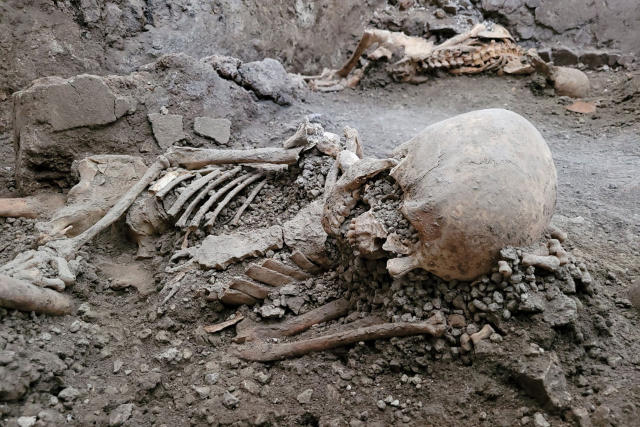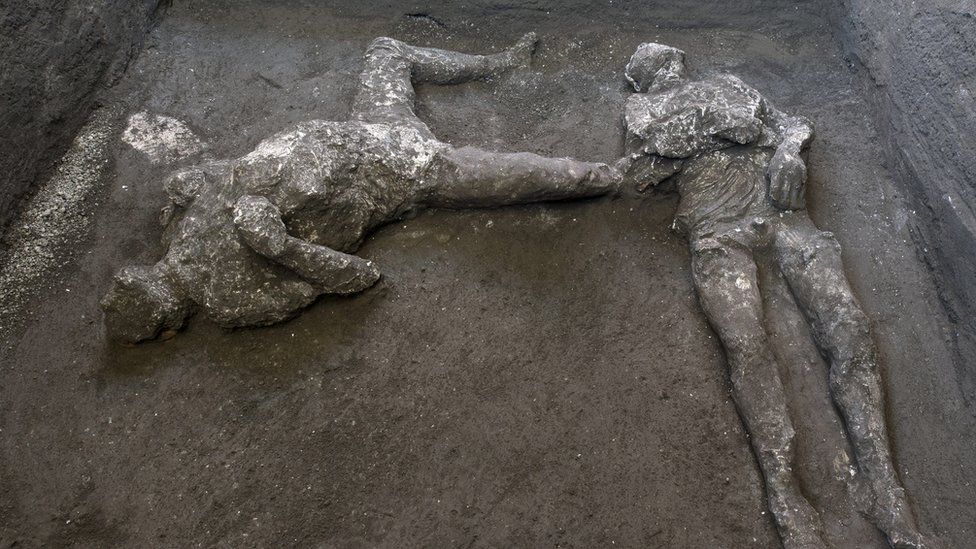Restoration Reveals Details of Romans Who Perished in Pompeii
Pompeii, the ancient Roman city that met its tragic end in 79 AD due to the catastrophic eruption of Mount Vesuvius, has long been a source of fascination for historians, archaeologists, and the general public alike. Recent restoration efforts have unveiled new details about the lives of the Romans who perished in Pompeii, shedding light on their daily routines, social status, and the events that unfolded during that fateful day. In this article, we will delve into the fascinating discoveries made during the restoration of Pompeii.
One of the most remarkable aspects of Pompeii is the preservation of human remains. The volcanic ash and pumice that buried the city also preserved the shapes of the victims, creating voids that allowed archaeologists to make plaster casts of the victims. These casts offer an eerie but incredibly detailed glimpse into the final moments of the inhabitants of Pompeii, revealing their ages, postures, and even their clothing.
The restoration work has provided insights into the social structure and occupations of Pompeii’s residents. It is evident that the city was home to people from diverse backgrounds and professions. Some of the discovered victims were slaves, while others belonged to the upper classes. This mix of social strata helps paint a more complete picture of Pompeii’s society.
Pompeii was renowned for its exquisite frescoes and mosaics, and restoration efforts have revealed the stunning artwork that adorned the walls of the city’s homes and public buildings. These artworks not only showcase the artistic talents of the time but also provide clues about the daily life, values, and preferences of the residents.
The meticulous restoration of Pompeii’s buildings has allowed archaeologists to reconstruct domestic scenes, offering a glimpse into the daily life of its inhabitants. Kitchens, bedrooms, and dining areas have been restored to their former glory, complete with utensils, furniture, and other household items, providing a detailed view of Roman domesticity.
Pompeii was not just a collection of homes but also had a thriving urban center with public spaces. Restoration efforts have unveiled the grandeur of its public buildings, including the impressive amphitheater, temples, and marketplaces. These spaces reveal the civic life and cultural activities that took place in Pompeii.
The restoration of Pompeii also serves as a poignant reminder of the city’s tragic end. The well-preserved casts of the victims, frozen in their final moments of fear and agony, highlight the overwhelming and sudden nature of the disaster. This emotional connection makes Pompeii a haunting but invaluable historical site.
The ongoing restoration efforts in Pompeii continue to provide invaluable insights into the lives of the Romans who perished there nearly two millennia ago. Through the preservation of bodies, art, domestic scenes, and public spaces, we gain a deeper understanding of the people and society of Pompeii. Moreover, this restoration serves as a testament to the enduring importance of preserving our past, ensuring that the tragic fate of Pompeii is never forgotten and that its lessons continue to inform our understanding of history.
Hits: 4




